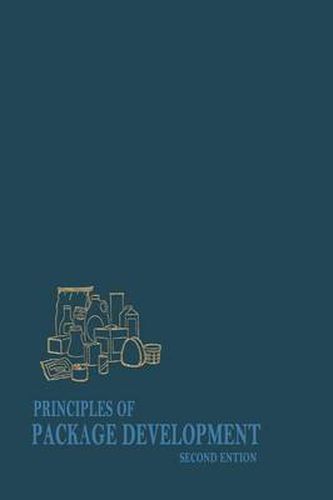Readings Newsletter
Become a Readings Member to make your shopping experience even easier.
Sign in or sign up for free!
You’re not far away from qualifying for FREE standard shipping within Australia
You’ve qualified for FREE standard shipping within Australia
The cart is loading…






This title is printed to order. This book may have been self-published. If so, we cannot guarantee the quality of the content. In the main most books will have gone through the editing process however some may not. We therefore suggest that you be aware of this before ordering this book. If in doubt check either the author or publisher’s details as we are unable to accept any returns unless they are faulty. Please contact us if you have any questions.
Since the first edition of Principles of Packaging Development was published, the packaging industry has undergone many profound changes. These have included the virtual elimination of cellophane and its replacement with oriented polypropylene as a carton overwrap, fluid milk in blow-molded HDPE bottles, PET beverage bottles, cookie bags and cartons lined with polyolefin coextrusions instead of waxed glassine, and bread in reclosable polyolefin and coextruded film bags. New phrases have also worked their way into the lexicon of the practic ing packaging technologist, such as child resistance and tamper evident.
This most popular text on packaging demanded updating. How these phrases and ideas have affected the industry in the 1980s and how they will probably alter its course in the future are treated. New concepts of packaging system planning and forecasting tech niques are intruding into package management, and new chapters will introduce them to the reader. The years have added a certain degree of maturity to the packaging industry. Not only have the original authors broadened their per spectives and changed professional responsibilities, we have also in cluded a third co-author, Dr. Aaron L. Brody, whose experience in the industry, academic background, and erudite insights into the very na ture of packaging have added an unparalled degree of depth to this book. We would like to thank David L.
$9.00 standard shipping within Australia
FREE standard shipping within Australia for orders over $100.00
Express & International shipping calculated at checkout
This title is printed to order. This book may have been self-published. If so, we cannot guarantee the quality of the content. In the main most books will have gone through the editing process however some may not. We therefore suggest that you be aware of this before ordering this book. If in doubt check either the author or publisher’s details as we are unable to accept any returns unless they are faulty. Please contact us if you have any questions.
Since the first edition of Principles of Packaging Development was published, the packaging industry has undergone many profound changes. These have included the virtual elimination of cellophane and its replacement with oriented polypropylene as a carton overwrap, fluid milk in blow-molded HDPE bottles, PET beverage bottles, cookie bags and cartons lined with polyolefin coextrusions instead of waxed glassine, and bread in reclosable polyolefin and coextruded film bags. New phrases have also worked their way into the lexicon of the practic ing packaging technologist, such as child resistance and tamper evident.
This most popular text on packaging demanded updating. How these phrases and ideas have affected the industry in the 1980s and how they will probably alter its course in the future are treated. New concepts of packaging system planning and forecasting tech niques are intruding into package management, and new chapters will introduce them to the reader. The years have added a certain degree of maturity to the packaging industry. Not only have the original authors broadened their per spectives and changed professional responsibilities, we have also in cluded a third co-author, Dr. Aaron L. Brody, whose experience in the industry, academic background, and erudite insights into the very na ture of packaging have added an unparalled degree of depth to this book. We would like to thank David L.